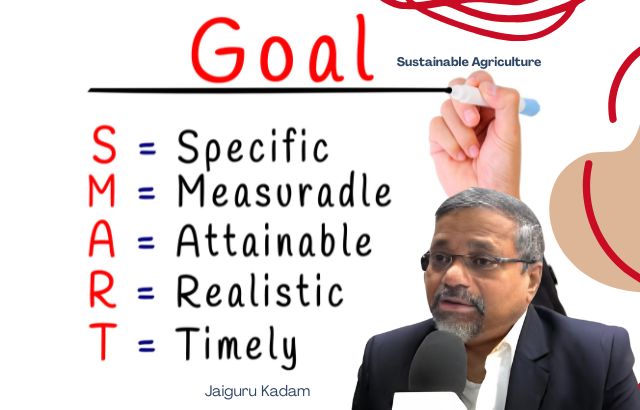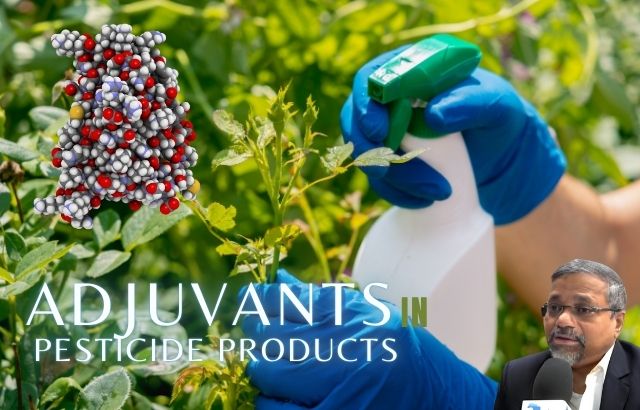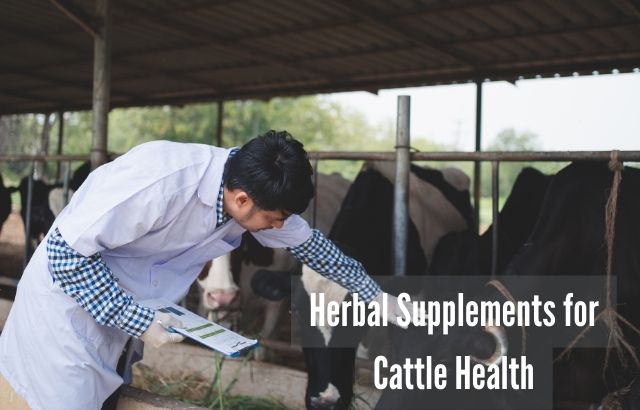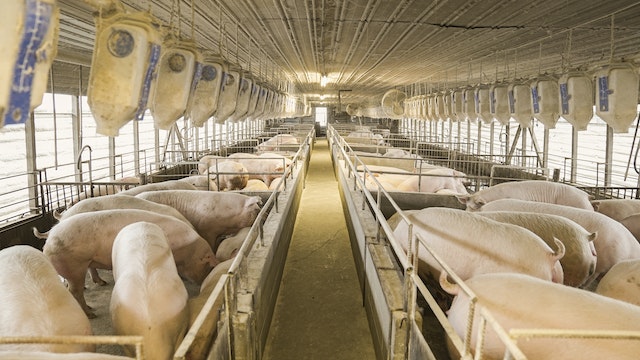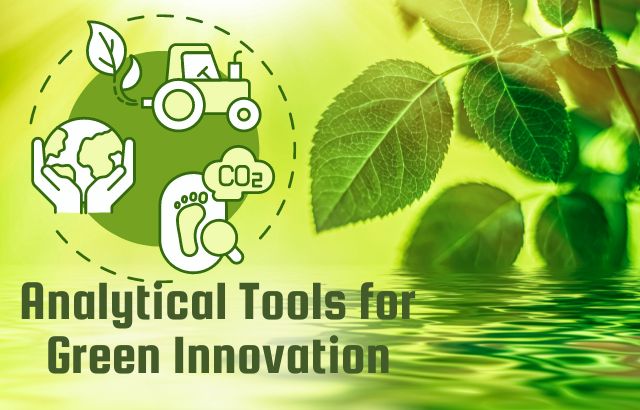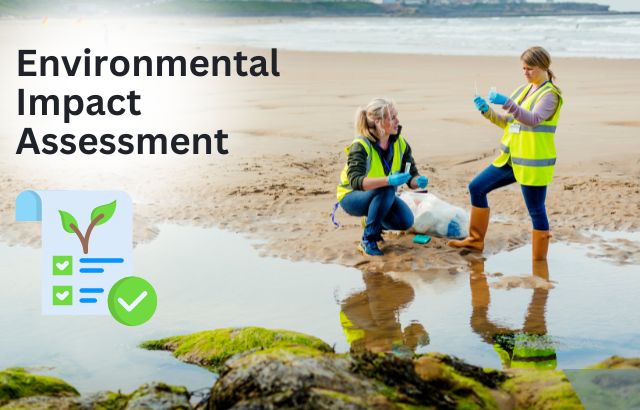Sustainable agriculture is about more than just protecting the environment—it’s about optimizing farming practices to achieve tangible, measurable outcomes. To reach these outcomes, farmers and agricultural professionals must set SMART goals: Specific, Measurable, Achievable, Relevant, and Time-bound objectives that guide progress. Green innovation plays a pivotal role in this process, with tools like green solvents, herbicide safeners, and plant-derived herbicides offering sustainable alternatives that can help farmers meet their SMART goals.
In this article, we explore how these green technologies, based on Jaiguru Kadam’s research, are paving the way for smarter, more sustainable agricultural practices. These innovations enable farmers to meet their goals while reducing environmental impact, improving efficiency, and enhancing profitability.

SMART goals are a framework designed to make objectives clear, actionable, and achievable. The acronym stands for Specific, Measurable, Achievable, Relevant, and Time-bound. In agriculture, this means setting precise goals (Specific) like reducing pesticide use, tracking progress (Measurable) through metrics such as reduced chemical consumption or improved yields, ensuring the goal is realistic (Achievable) based on available resources, aligning it with broader sustainability objectives (Relevant), and setting a clear timeline (Time-bound) to evaluate success. By using SMART goals, farmers can implement green innovations effectively, track their impact, and drive long-term sustainable growth.
Green Solvents: Achieving SMART Sustainability Goals
What Are Green Solvents?
Green solvents are eco-friendly chemicals derived from renewable resources, designed to replace toxic, petroleum-based solvents in agrochemical formulations. In agriculture, they are used in herbicides, pesticides, and other formulations to reduce toxicity and environmental pollution.
How Green Solvents Help Meet SMART Goals
- Specific: Green solvents help reduce chemical toxicity in farming operations, making them safer for the environment and human health.
- Measurable: By replacing toxic solvents, farmers can track reductions in chemical usage and associated environmental harm, such as carbon emissions.
- Achievable: Transitioning to green solvents is a practical goal, with alternatives like limonene and ethyl lactate already commercially available.
- Relevant: With growing environmental concerns and regulations, using green solvents is directly relevant to the agriculture industry’s future.
- Time-bound: Many farmers can begin seeing results within the first season by switching to greener alternatives.
Example: Limonene in Agrochemical Formulations
Take the example of limonene, a green solvent derived from citrus fruits. In a farm with a pesticide usage of 1,000 liters per year, switching from petroleum-based solvents (which emit 3.8 kg CO₂ per liter) to limonene (which emits 0.7 kg CO₂ per liter) would reduce the farm’s carbon footprint by:
- CO₂ Reduction = (3.8 – 0.7) kg CO₂ × 1,000 liters = 3,100 kg CO₂ saved annually.
This measurable reduction in carbon emissions helps farmers achieve their sustainability goals in a time-bound, specific, and achievable manner.
Green Herbicide Safeners: Protecting Crops and Enhancing Yield
What Are Herbicide Safeners?
Herbicide safeners are chemicals that protect crops from the harmful effects of herbicides while ensuring effective weed control. By enhancing the selectivity of herbicides, safeners reduce the risk of crop injury and improve herbicide efficiency.
SMART Goals with Herbicide Safeners
- Specific: Safeners protect crops from herbicide damage, ensuring crops thrive while controlling weeds.
- Measurable: Yield improvements and reduced crop damage can be directly measured after the application of safeners.
- Achievable: Safeners like Benzoxazolinone (BOA) have already been tested and proven effective on crops like maize and wheat.
- Relevant: Safeners contribute to reducing the costs of weed management by improving herbicide efficiency.
- Time-bound: Farmers can see an improvement in crop yield within a single growing season.
Example: Benzoxazolinone in Maize
In field trials, Benzoxazolinone (BOA) has been shown to increase maize yields by up to 15% compared to untreated fields, even when exposed to herbicides like atrazine. This increase in yield not only helps meet farmers’ goals of improving productivity but also aligns with sustainable farming practices by minimizing crop damage.
Plant-Derived Herbicides: A Sustainable Solution for Weed Control
What Are Plant-Derived Herbicides?
Plant-derived herbicides are natural herbicidal compounds extracted from plants. They are an eco-friendly alternative to synthetic herbicides, providing effective weed control without the negative environmental impacts.
How Plant-Derived Herbicides Support SMART Goals
- Specific: Plant-derived herbicides, such as Pelargonic acid and Citric acid, provide targeted weed control without harming crops.
- Measurable: The success of these herbicides can be measured by their effectiveness in controlling weed populations and improving crop yield.
- Achievable: Many plant-derived herbicides are already commercially available, making them a feasible solution for farmers.
- Relevant: Reducing the use of synthetic herbicides helps farmers meet sustainability goals and respond to rising consumer demand for eco-friendly products.
- Time-bound: Plant-derived herbicides show results quickly, often within a few weeks of application, allowing for rapid impact on weed control.
Example: Pelargonic Acid for Weed Control
Pelargonic acid, derived from plant oils, has been shown to be as effective as synthetic herbicides like glyphosate in controlling weeds. With lower application rates and reduced toxicity, this plant-derived herbicide helps farmers achieve multiple goals:
- Lower Herbicide Use: Reducing application rates by 30% compared to glyphosate.
- Economic Savings: Farmers save money by using less herbicide while achieving the same level of control.
- Environmental Benefits: Reduced reliance on synthetic chemicals contributes to improved soil health and water quality.
FAQ: Achieving SMART Goals with Green Innovation in Agriculture

1. How do green solvents help in achieving SMART goals?
Green solvents help achieve SMART goals by reducing environmental toxicity and carbon emissions, thus making farming operations more sustainable. Their use can be measured through reduced chemical use and environmental impact, aligning with specific, measurable sustainability targets.
2. What are the measurable benefits of using herbicide safeners?
Herbicide safeners improve crop yield and reduce herbicide-induced crop damage. Farmers can measure these benefits through increased productivity and reduced crop losses, which align directly with both environmental and economic goals.
3. Can plant-derived herbicides replace synthetic herbicides entirely?
While plant-derived herbicides are highly effective, they may not completely replace synthetic herbicides in all cases. However, they can significantly reduce reliance on synthetic chemicals, contributing to SMART goals like reducing chemical use and minimizing environmental impact.
4. How do these innovations contribute to the environmental sustainability of farming?
These green innovations contribute to environmental sustainability by reducing chemical runoff, enhancing soil health, and reducing carbon emissions. Through targeted, eco-friendly solutions, they help farmers meet sustainability goals in both the short and long term.
5. What is the ROI of adopting green technologies in farming?
While green technologies like green solvents and plant-derived herbicides may have higher initial costs, they provide long-term savings through reduced pesticide and herbicide use, improved crop yields, and better compliance with environmental regulations. This results in a positive return on investment (ROI) over time.
Conclusion: Achieving SMART Goals with Green Innovation in Agriculture
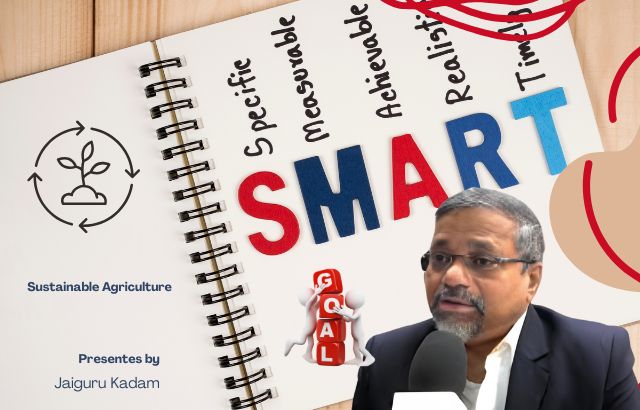
Incorporating green solvents, herbicide safeners, and plant-derived herbicides into agricultural practices empowers farmers to meet their SMART goals—whether it’s reducing chemical use, improving crop yields, or lowering carbon emissions. Jaiguru Kadam’s groundbreaking research underscores how green innovation can directly contribute to a more sustainable, efficient agricultural system.
By embracing these advanced technologies, farmers can chart a clear path to success with goals that are Specific, Measurable, Achievable, Relevant, and Time-bound. Sustainable agriculture is no longer a distant ideal; it’s a concrete goal that can be achieved through the right tools, knowledge, and mindset.
SMART goals guide companies toward achieving green success by offering a clear, structured path to meeting environmental objectives while ensuring measurable progress. Here’s how each element of SMART goals supports a green strategy:
- Specific: Setting clear, well-defined sustainability targets—such as reducing carbon emissions or increasing renewable resource use—ensures a focused approach to achieving environmental outcomes. For instance, a company might set the specific goal of reducing water consumption by 30% in its operations.
- Measurable: Sustainability requires tracking and measuring progress. SMART goals help companies quantify success by tracking metrics like waste diversion, energy savings, or reductions in carbon emissions. This data is crucial for assessing what’s working and where improvements are needed.
- Achievable: By establishing goals that are realistic given a company’s resources, SMART goals prevent overreaching and encourage steady progress. For example, setting a goal of reducing energy consumption by 10% in the next year ensures that the company can work towards sustainability without risking failure or burnout.
- Relevant: Goals aligned with a company’s core business values make green initiatives meaningful. A company focused on eco-friendly products might set a goal to increase the proportion of recycled materials in packaging, ensuring that sustainability is at the heart of its business strategy.
- Time-bound: Defining deadlines helps companies stay focused and motivated. A specific timeline, like “reduce plastic packaging by 25% within two years,” ensures that the company’s sustainability goals stay on track and progress is measurable.
Integrating SMART goals not only streamlines sustainability efforts but also enhances accountability, fosters motivation, and drives meaningful, impactful change. This structured approach leads to measurable success and ensures long-term commitment to environmental stewardship.
Ready to take your sustainability efforts to the next level? Embrace SMART goals and green innovations in your operations today. Let’s work together to create a greener, more sustainable future. Reach out now to learn how we can help you achieve your green goals.

